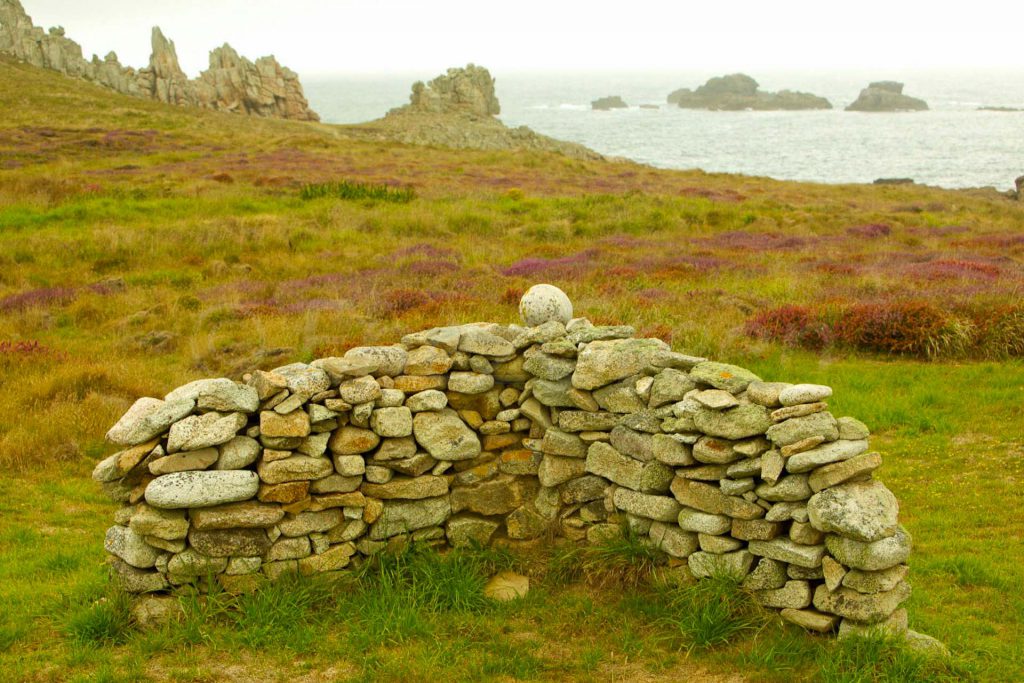The house of Niou first eco-museum of France
How was organised the daily life of the Ouessantins who lived in autarky before the arrival of the first boats?
First eco-museum in France, the Maison du Niou opened in 1968 by the Regional Natural Park of Armorique to share the daily lives of its women and men adapting to the harsh living conditions on the island of Ouessant.
The eco-museum of Niou-Huella: the life of Ouessantais in the 19th century
By visiting the eco-museum of Niou-Huella, you immerse yourself completely in the life of the islanders in the 19th century. The museum is made up of two typical south-facing stone houses, like most of the Esthinese dwellings, to protect themselves from the prevailing winds.
The majority of Ouessantine houses have the same architecture built towards the end of the 19th century, they stand in thick walls mounted in granite stone adjusted to the clayey earth. The colors blue and white predominate, from the barrier at the edge of the path to the shutters, without forgetting the interior decoration.
The ecological instinct of the islanders of the Iroise Sea
Visitors are welcome to enter the two rooms of the house. On one side, the living room or ‘penn ludu’ with a fireplace, two chests benches (which sometimes served as beds for children), two beds closed and two carved tables. On the other side, the ‘penn brao’ room where the big events took place, decorated with plates, trinkets and candlesticks… In the corridors, one can observe cereal boxes, salt meat reserves and there is also the bar where the pig was killed.
The visit also allows to appreciate the ecological instinct of the islanders and to understand how they adapted their houses to withstand the climatic conditions by building solid walls with granite stones, small openings, and oriented facades. In the South to protect itself from the offshore wind…
See also: ecotourism tours Kalon Eusa proposed by Ondine Morin.
Ouessant, the island of women
Here, everything proves that the island of Ouessant was indeed ‘the island of women’ who, in the absence of men gone to sea, had to fend for everything, namely agricultural work, animal husbandry, construction, paving of roads and plots…
Without a fishing port, the island was not really open to the sea. The whole life of the island was also centered on the village of Lampaul located 3 km from the pier. The blue and white decorations and the many representations of the Virgin Mary and Christ testify to the importance of the pious and mystical existence of the Ushantines.
Outside the museum, the haystack adorned with straw braids and the enclosed parcels of dry stone walls where endangered Ouessant sheep, an endemic species, bear witness to the days when women were alone in agricultural work. And the survival of the family.
Among the missions of the eco-museum, the preservation of cultural heritage and especially know-how, songs, practices and beliefs is very important. Also, the museum team meets once a month with the elders around a particular theme. These ‘gorzez’, discussions of women, are the opportunity for visitors to learn the spinning of the wool distaff, listening to anecdotes about island life or songs Breton.
Heads-up! Regarding the content on this page.
The content on this page (The ecological museum of Niou-Huella) was automatically translated from the original French version.
We’ll soon be working on it.



